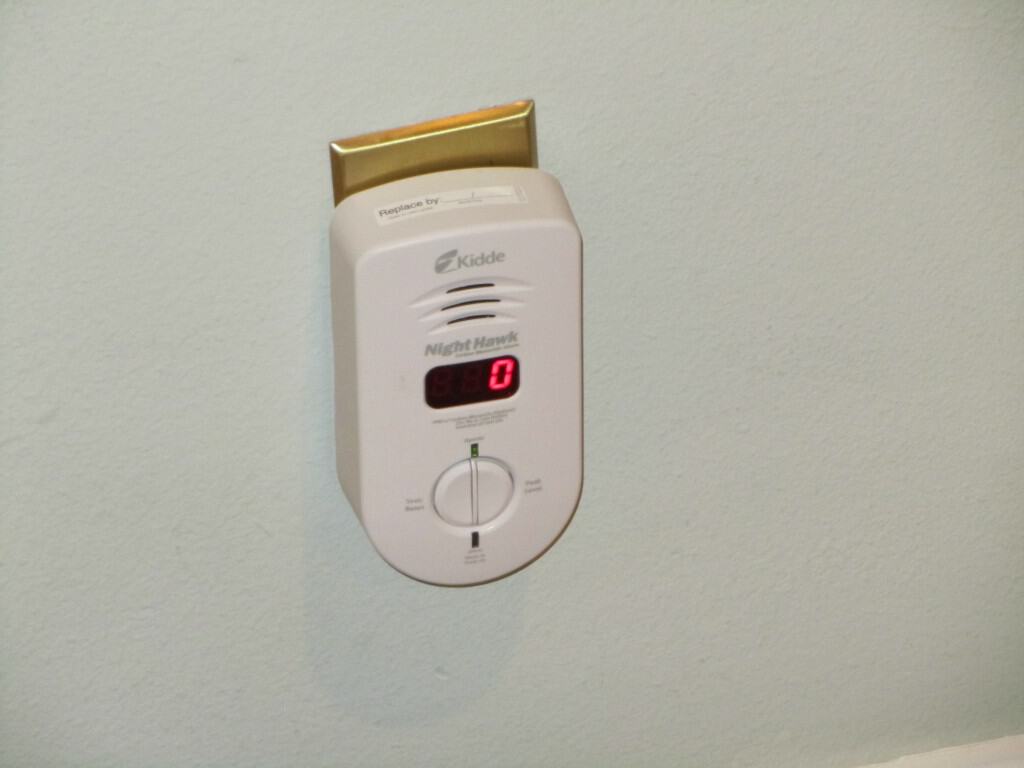Big Red Car here. Cold day today in the ATX. Not quite convertible weather yet.
Good day to snuggle up with a good book, a nice glass of wine and a fire.
One thing about fires, they can be a bit dangerous. Particularly gas fires which use an artificial log.
Fireplaces
There is nothing as lovely as a fire on a cold day — well except for a quick ride in a Big Red Car with the top down and the windows up and the heat blazing. Get your leather jacket, gloves and a hat and I will show you a good time.
Back to the issue of gas fireplaces.
Here is a picture form The Boss’s bedroom which shows a very nice artificial log fire.
This fireplace has an artificial set of logs and the flame is from a gas source. This is a gas fire and not a wood fire.
One of the byproducts of this fire could be some carbon monoxide which normally is discharged up the chimney by the heat of the fire.
Sometimes, something can go wrong like a leak in the flue or a “cold fire” which does not burn hot enough to ensure that the carbon monoxide is expelled from the room.
This can be very, very, very dangerous. Doesn’t happen very often, but it really only has to happen once to be a tragedy.
Old HVAC (heating, ventilation and air conditioning) units
Another source of carbon monoxide can be leakage from an HVAC unit — the air handler that has the heating unit in your home typically in an attic or other enclosed space.
When these units age, they can allow carbon monoxide to leak out. Seals get brittle, hairline cracks develop in the fire box.
Every year when you have your heating unit service before the start of winter — if you are not doing this, then you should be — ask the technician to take some readings in the vicinity of the unit to see if any carbon monoxide is leaking out.
Carbon Monoxide
Carbon monoxide is a colorless, tasteless and odorless gas that is just slightly lighter than air. It is generally created when combustion occurs in the absence of sufficient oxygen to create complete combustion. The primary byproduct of complete combustion is carbon dioxide and the primary byproduct of incomplete or partial combustion is carbon monoxide. Neither one is good for humans and pets. Both are killers.
Carbon monoxide is created primarily in closed in spaces — hence the concern about a cold fire in a bedroom or an air handling unit or heater in an attic.
Carbon monoxide poisoning is the most common form of poisoning in the United States and approximately 500 persons die each year from this tragic and preventable poisoning.
Carbon monoxide poisoning can be cumulative as it takes approximately five hours to rid the body of any carbon monoxide. The symptoms are often difficult to detect but include nausea, vomiting, headache, dizziness, fatigue and general weakness. It will make your veins a bit more red and thus looks quite healthy. You may faint, feel disoriented, have trouble seeing or experience seizures.
If this happens, get into the fresh air and immediately seek emergency medical treatment alerting the responders to the possibility that you may be suffering from carbon monoxide poisoning which will likely result in their administering oxygen to you.
Remember, this is a silent, colorless, tasteless and odorless killer. Act quickly.
Carbon monoxide monitors
There is absolutely no reason to leave your safety to chance. You can buy a carbon monoxide monitor — like a smoke detector — to monitor the concentration of carbon monoxide in the air in your home.
You can buy a carbon monoxide monitor at places like Loew’s and Home Depot. They cost about $30-60 and a good brand is Kidde. Kidde is an old line manufacturer of all kinds of fire equipment.
The device looks just like the picture — a mid-range unit with a reading, an ear splitting alarm, a test function and a re-set function — and plugs directly into the wall plug as shown and has a battery backup.
Place a unit in the same room as a fireplace or in a room which has a return air duct or grill returning air back to the air handling unit or heater. This location is chosen to ensure you have a lot of air flow to test.
If the unit detects carbon monoxide, it will set off an alarm and you can turn off the offending source of carbon monoxide, air out the room and exit the house. Call an air conditioning repair company immediately.
The alarm is set at a sensitivity which is low enough that no damage will be done and you can safely do all of the above.
So, go get a few carbon dioxide monitors and read the instructions and install them. You will sleep more soundly but, more importantly, you will live through the experience.
Let me know if you have ever had a bad experience with carbon monoxide. You can sign up to get the Big Red Car’s most recent musings by leaving your email address at the lower right hand corner of this page. Do it. I will send new posts directly to you.
But, hey, what the Hell do I know anyway? I’m just a Big Red Car.



I had carbon monoxide poisoning in Florence in art school. The heating tube was backed up for 5 floors, had been sputtery, they fixed and left it on high. I had a horrible cold, and was bedridden. I fell into the deep sleep. My neighbor banged on the door forever to wake me. Glad for her dedication. I would have slept forever.
Apparently, my place was so filled that outside was poison level air. You should have seen how much crap was in the tube when they cleaned the exhaust.
I couldn’t get on a bus or be inside much for weeks – I was so claustrophobic. I am super conscious about gas now, and we have the units you speak of provided by the co-op I live in.
.
My Father captured Florence in WWII. He gave it back.
Bad deal on the carbon monoxide. You cheated death for a reason. Like the movie Saving Private Ryan — earn it. Make it worth it. I know you are.
Everyone in America who has a gas log of any kind should have a carbon monoxide alarm. Anyone who has an interior HVAC unit should also have a carbon monoxide alarm.
Regard and stay well.
JLM
.
Glad you raise awareness for this. Often, stories of people you know who suffer something helps you be aware of potential hazards or conversely safety measures.
I hit my head recently in a fall and got stitches. It’s a great thing to show to my daughters friends who ice skate with hands in their pockets (my current safety squirel issue). To bad the cut doesn’t still have the stitches in too look really ugly and scary – I’m sure it would be more effective that way….
.
The carbon monoxide thing was a big surprise to me. I had no idea that 500 persons were killed per year in the US, it seems so preventable and rudimentary. That is more than the number of people murdered in NYC annually.
Sorry to hear about the fall.
Were you being subpoenaed to testify about Benghazi also?
Life is so funny, the margin between danger and safety is so thin.
.
The thin edge is very thin, eh? Learn how thin early, and never forget.
My fall was the bathmat ( the new one I bought specifically with sticky bottom not to slip) going out from under my foot. I hit the sink fast and hard above the temple and nicked a vein. Bathroom looked like Psycho.
Fortunately, my BF is an ER doc, so he went into high gear to control bleeding. CT scan was clean on my head.
Having an ER doc around is a lesson in the thin edge. Is very helpful in pointing out dumb stuff people do to PantherKitty.
Wow. Do you have one of these monitoring units in your place now? I’m going to get one especially that we just installed a new propane furnace.
I saw this related development to clean the air of carbon monoxide:
http://www.nytimes.com/2013/01/06/business/pilot-plant-in-the-works-for-carbon-dioxide-cleansing.html?ref=technology
.
Interesting article. I have two in my house. One in the bedroom where the gas log fireplace is located and one in the return air room of the 17 year old HVAC unit I have. It already shows a bit of carbon monoxide leakage in the attic.
One of the units has a level indicator which has never gotten above zero.
.
I have one in my studio, provided by building, and the home one needs replacing. On my list for this week!
.
Get one with the digital reading. It is fun to see if it ever shows up. I have never had a positive reading. And that is a good thing.
.